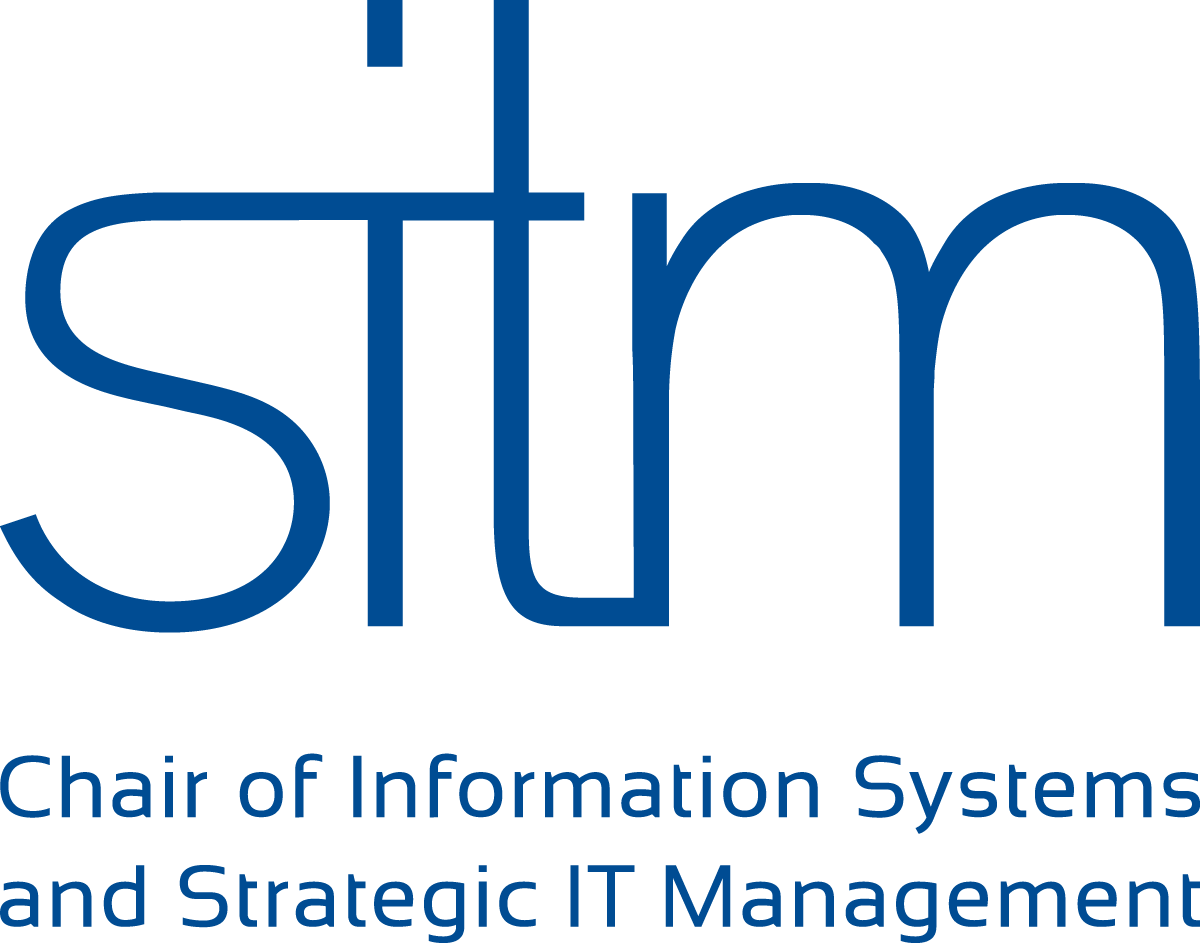Digital Transformation and IS/IT Innovation Management
Digital Transformation and IS/IT Innovation Management


Information systems and information technology (IS/IT) are an essential part of every modern organization. As a result, every industry is spending billions of dollars per year on digital technology, even in sectors that are typically considered non-IT-intensive, such as agriculture and mining. The current trend of “digital transformation” (or digitalization/ digitization) is taking this development to the next level. “Digitally enabled” innovations entail new combinations of digital and physical components to create novel and disruptive products, services, and processes based on new business or value-creation models [1]. Hence, digital transformation activities are not to be confused with technology-driven optimizations, changes, or refactoring tasks [2].
Digital and disruptive developments like big data, Industry 4.0, the Internet of Things (IoT), smart homes, smart cities, smart cars, and smart metering can greatly change value chains and business models. Because of the rapidly changing environment, IS/IT functions perceive a need to be innovative and keep up the pace with new IS/IT product and service developments. To this end, organizations need to dismantle the traditional silos between development and operations (DevOps) and facilitate agile approaches in order to deliver in a shorter cycle time. Recent studies show that the topic is becoming increasingly important and reaching the top positions on CEOs’ agendas. According to a survey [3], 88% of global CEOs say that digital technologies deliver “quite high” or “very high” value to their organizations. While many “traditional” industries lack digital skills, technology companies are advancing into neighboring markets and disrupting established business models with their technological and innovative capabilities.
Owing to its novel character, the strategic processes of digital transformation have received little attention from researchers. To fill this gap and increase our understanding of the success factors for digital transformational strategies, we will investigate two sides of the same coin: the internal (intra-organizational) and the external (inter-organizational) views. From a practical perspective, we strive to provide recommendations to overcome challenges throughout the transformation process.
Intra-organizational View
Many organizations face intra‐organizational tensions when it comes to exploring and exploiting digital innovations. Therefore, organizations may need to develop in the intra‐organizational context. Many companies acknowledge that such a step requires new approaches to strategy development and the organizational anchoring of IS/IT innovation management. However, the role of these activities in an intra‐organizational context is still largely unexplored.
Institutionalization of digital innovation management
To gain or maintain competitive advantages in the digital era, many organizations have started conducting systematic IS/IT innovation management. Empirical research has demonstrated that initiatives at present are still immature and unsuccessful [4, 5]. An analysis of the obstacles shows that a missing or inadequate organizational structure is one of the main challenges. Some of these studies have identified various hurdles that organizations have to overcome to address IS/IT innovations [6, 7]. An analysis shows that a high portion of the problems relates to an insufficient organizational anchoring of the topic, e.g. unclear role definitions, missing structures, or missing integration with other functions. Nevertheless, research on this issue is still scarce. This gap motivates our research, which aims to develop recommendations to institutionalize IS/IT innovation management in organizations.
In our first empirical investigations, we have, by following a design science approach, identified a set of general requirements that should be fulfilled by an institutionalization variant, as the fulfillment of these requirements is supposed to have a positive influence on IS/IT innovation management initiatives. We also found that there is no general-purpose solution that fulfills all requirements in an absolute fashion. However, we derived archetypical forms of institutionalization during our empirical work, labeled as design variants, and used the identified requirements to show existing tradeoffs associated with certain design choices. Further steps will involve an evaluation cycle to increase the validity and utility of our findings. By conducting our research, we intend to help organizations identify, understand, and correct flaws in their institutionalization of IS/IT innovation management and contribute to the nascent body of knowledge in this discipline.
Digital business strategy development
Recent publications have emphasized the necessity of integrating the digital and physical resources with the business strategy in order to leverage the potential advantages of digital innovations. IS researchers coined the term “digital business strategy” [8] for the fusion between IT strategy and business strategy. The aim of digital business strategy development is to bridge the separation between business and IT and make business and IS/IT strategies inseparable. Hence, it represents a “new logic of competitive strategy” [9] that is “formulated and executed by leveraging digital resources to create differential value.” [8]
This development severely affects the strategizing process as organizations should no longer regard IS/IT strategies as subordinate to corporate strategy. Consequently, the future strategizing process of companies should focus less on a successful alignment of business and IT and more on the development of a digital business strategy. The digital business strategy replaces the current institutionalization of both the business and IS/IT strategies, and therefore it requires careful consideration in theory and practice.
While the general concept of digital business strategy is unanimously defined [8, 10], the elements of accordant strategies and their definition remain rather unclear. Moreover, research lacks an overview of the institutionalization of digital business strategies, i.e. the processes necessary and roles responsible for formulation and incorporation. Our research aims to investigate digital business strategies and their content, as well as establish managerial guidelines on how to develop and adapt those strategies successfully.
Inter-organizational View: Digital Partner Management
The definition of intra-organizational processes and structures is a necessary condition for the management of digital innovations. However, the potential for IS/IT-enabled innovation often extends beyond an organization’s boundaries to inter-organizational systems through strategic partnerships, networks, and alliances [11].
According to common theories like the resource dependency theory [12], organizations strive to maximize their individual power while requiring stability and certainty, which, in turn, can be granted by dependencies like organizational partnerships. Especially today, many organizations lack the necessary technological or transformational capabilities to compete. Research indicates that activating strategic suppliers in a cooperative process is important for digital transformation as it provides access to tacit resources that are difficult to transfer, such as skills, knowledge, and experience. Many organizations strive to fill these gaps by bonding with external suppliers. Companies already spend large shares of their IT budgets on services and products provided by external suppliers, and many are looking to expand further into these fields [14]. According to recent findings, one of the main reasons for joining partnerships is that they offer the opportunity to create value that a single company cannot do on its own [15] . Some of the biggest companies already have more than one-fifth of their total assets tied to alliances with external suppliers [16]. Although companies increasingly rely on external suppliers, many are dissatisfied with the results of the collaboration.
A real partnership in the digital era differs from a traditional customer-vendor relationship, as traditional strategic relations with suppliers for “commodity IT” may not effectively address demands for exploratory digital initiatives. Therefore, strategic digital suppliers proactively enable organizations to transform and drive new market opportunities, as well as gain increased value [11, 17]. In order to be successful, these new types of relationships demand a close fit between processes, beliefs, vision, and corporate strategy. Collaboration will only work when all parties acknowledge the new quality of the partnership, align their target and incentive systems accordingly, and form a relationship of mutual trust and openness.
The need for new, joint revenue– and value-producing business models might lead to disruptions of longstanding relationships with customers and suppliers. However, research and practice currently lack the insight into possible approaches to “reconfigure” the traditional customer-vendor relationship to fit the needs of digital business strategies. For this reason, our research seeks to shed light on the impacts of the digital transformation on supplier relations and provide recommendations for future modes of cooperation for organizations in order to gain increased value from their suppliers.
Duration
2015–present (ongoing)
Involved researchers
Student contributions
- Dennis Böhl
- Cathrin Kahre
- Daniel Bücker
Publications
- Muschkiet, M.; Kühne, B.; Jagals, M.; Bergan, P.; Rehring, K.; Ahlemann, F.: Making Data Valuable for Smart City Service Systems - A Citizen Journey Map for Data-driven Service Design. In: Wirtschaftsinformatik 2022 Proceedings. 2022. DetailsFull textCitation
- Hoffmann, D.: Shaping Wellsprings of Innovation: Towards Organizational Design Configurations for Digital Innovation Management. In: Proceedings of the 26th European Conference on Information Systems (ECIS). Portsmouth, UK, 2018. DetailsCitation
- Urbach, N.; Ahlemann, F.: Die IT-Organisation im Wandel: Implikationen der Digitalisierung für das IT-Management. In: HMD Praxis der Wirtschaftsinformatik, Vol54 (2017), No 3, p. 300-312. DetailsFull textCitation
- Kahre, C.; Hoffmann, D.; Ahlemann, F.: Beyond Business-IT Alignment - Digital Business Strategies as a Paradigmatic Shift: A Review and Research Agenda. In: Proceedings of the 50th Hawaii International Conference on System Sciences (HICSS). Honolulu, HI , 2017. DetailsFull textCitation
- Böhl, D.; Hoffmann, D.; Ahlemann, F.: The Structural Anchoring of IS/IT Innovation Management: Toward an Organizational Design Theory. In: Proceedings of the 24th European Conference on Information Systems (ECIS). Istanbul, Turkey, 2016. DetailsFull textCitation
- Urbach, N.; Ahlemann, F.: IT-Management im Zeitalter der Digitalisierung. Springer, 2016. AbstractDetailsFull textCitation
In this book, Prof. Ahlemann and Prof. Nils Urbach discuss the implications of the current need for digitalization for companies and their IT. In the course of digitalization, IT organizations’ focus shifts from being a mere service provider to supporting the shaping of the business. IT is consequently increasingly required to cooperate proactively with other departments and to identify innovation possibilities.
The book’s target group includes IT managers, executives responsible for IT, and practice-oriented researchers, providing advice on how to react to, but also shape digital transformation.
- Koch, P.; Ahlemann, F.; Urbach, N.: Die innovative IT-Organisation in der digitalen Transformation. In: Helmke, S.; Uebel, M. (Ed.): Managementorientiertes IT - Controlling und IT - Governance . 2nd Edition. Springer, 2016. DetailsFull textCitation
- Urbach, N.; Ahlemann, F.: Der Wissensarbeitsplatz der Zukunft - Trends, Herausforderungen und Implikationen für das strategische IT-Management. In: HMD - Praxis der Wirtschaftsinformatik, Vol53 (2016), No 1, p. 16-18. AbstractDetailsFull textCitation
Die gegenwärtigen Entwicklungen in Wirtschaft, Gesellschaft und Informationstechnologie führen zu veränderten Anforderungen an den modernen Wissensarbeitsplatz. Um diesen Anforderungen gerecht zu werden, sind die erforderlichen organisationalen und technologischen Voraussetzungen zu schaffen. Der vorliegende Beitrag geht der Frage nach, welche konkreten Anforderungen an den „Wissensarbeitsplatzplatz der Zukunft“ gestellt werden, welche Herausforderungen sich dadurch für das strategische IT-Management ergeben und wie die erforderlichen Entwicklungsschritte aktiv angegangen werden können.
References
- Berman, S.: Digital Transformation: Opportunities to Create New Business Models. Strategy & Leadership. 40, 16–24 (2012).
- Ganguly, A.: Optimization of IT and Digital Transformation: Strategic Imperative for Creating a New Value Delivery Mechanism and Sustainable Future in Organization. European Journal of Business and Innovation Research. 3, 1–13 (2015).
- PwC: Leading in extraordinary times - The 2015 US CEO Survey essay. PricewaterhouseCoopers (2015).
- Hauser, R., Goldbrunner, T.: Hohe F&E-Ausgaben sind kein Garant für Unternehmenserfolg. In: Dietrich, L. and Schirra, W. (eds.) Innovationen durch IT - Erfolgsbeispiele aus der Praxis. Springer, Berlin Heidelberg (2006).
- Bharadwaj, A.S.: A Resource-Based Perspective on Information Technology Capability and Firm Performance: An Empirical Investigation. MIS Quarterly. 24, 169–196 (2000).
- Drews, P., Morisse, M., Zimmermann, K.: Towards a Concept for Integrating IT Innovation Management into Business IT Management. In: Proceedings of the Nineteenth Americas Conference on Information Systems. , Chicago, Illinois, USA (2013).
- Berbner, R., Bechtold, J.: Innovationsmanagement als elementarer Bestandteil des IT-Managements. In: Keuper, F., Schomann, M., and Zimmermann, K. (eds.) Innovatives IT-Management. pp. 259–274. Gabler Verlag, Wiesbaden (2010).
- Bharadwaj, A., El Sawy, O.A., Pavlou, P.A., Venkatraman, N.: Digital business strategy: Toward a next generation of insights. MIS Quarterly. 37, 471–482 (2013).
- Woodard, C.J., Ramasubbu, N., Tschang, F.T., Sambamurthy, V.: Design Capital and Design Moves: The Logic of Digital Business Strategy. MIS Quarterly. 37, 537–564 (2013).
- Mithas, S., Agarwal, R., Courtney, H.: Digital Business Strategies and the Duality of IT. IT Professional. 5, 2–4 (2012).
- Barrett, M., Davidson, E., Prabhu, J., Vargo, S.L.: Service innovation in the digital age: key contributions and future directions. MIS quarterly. 39, 135–154 (2015).
- Pfeffer, J., Salancik, G.R.: The external control of organizations: A resource dependence approach. NY: Harper and Row Publishers. (1978).
- Gartner: Chaos to Control: The Emergence of Vendor Management. (2009).
- Gartner: Chaos to Control: The Emergence of Vendor Management. (2009).
- Westerman, G., Calméjane, C., Bonnet, D., Ferraris, P., McAfee, A.: Digital Transformation: A Roadmap for Billion-Dollar Organizations. MIT Sloan Management (2011).
- Bamford, J.D., Gomes-Casseres, B., Robinson, M.S.: Mastering alliance strategy: A comprehensive guide to design, management, and organization. John Wiley & Sons (2003).
- Stephan, U., Patterson, M.G., Kelly, C., Mair, J.: Organizations driving positive social change: a review and an integrative framework of change processes. Journal of management. (2016).



